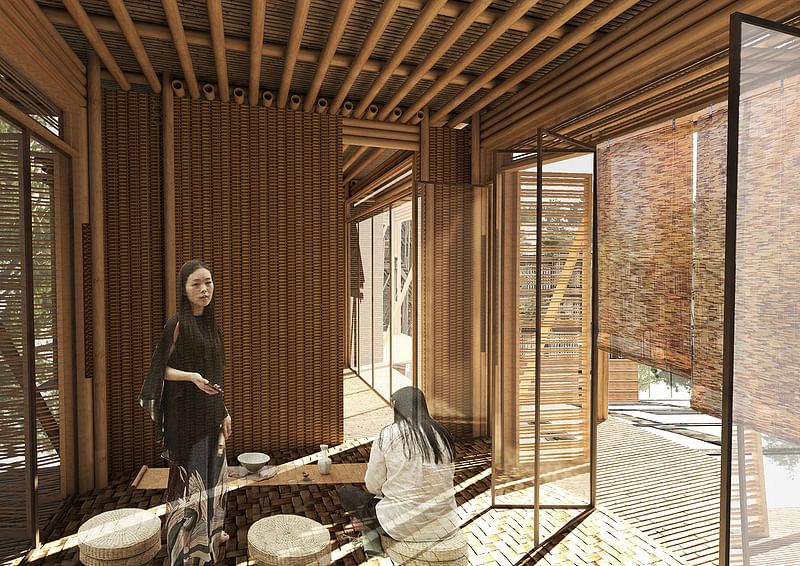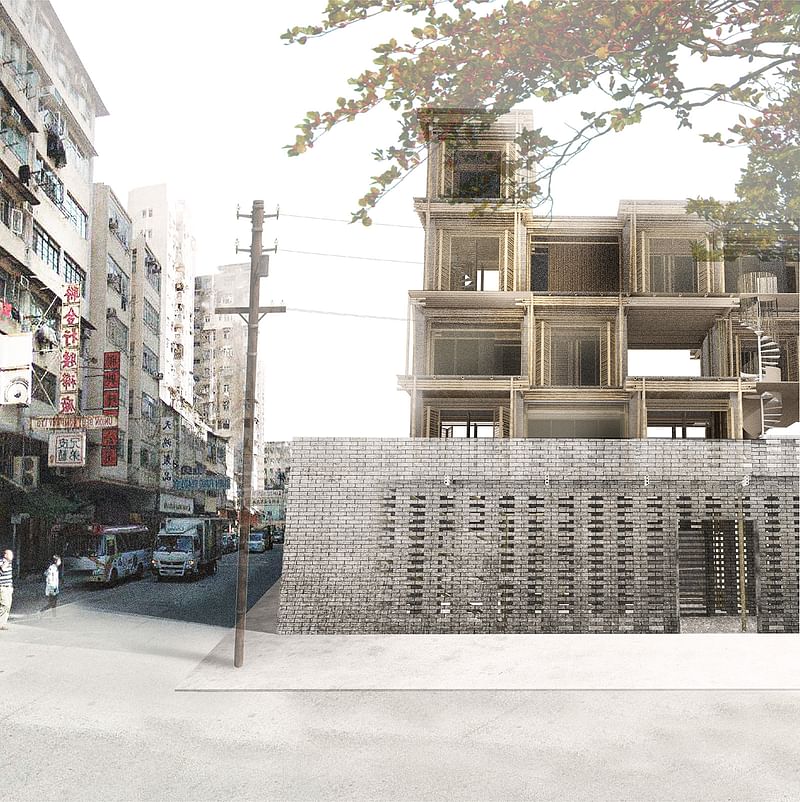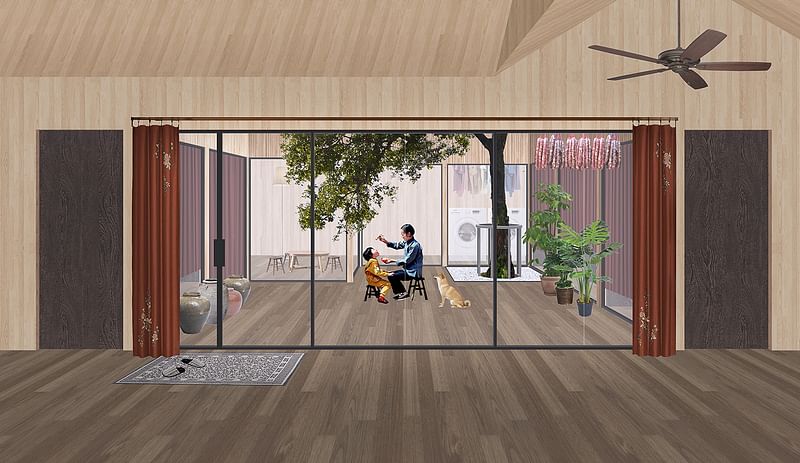Modern Collective Living Challenge winners envision accessible housing for rural China
By Justine Testado|
Wednesday, Nov 8, 2017

Related
Entrants in the Modern Collective Living Challenge were tasked with designing accessible housing for relocated farmers in rural China, in response to the country's rapid urbanization and its effects on rural communities. Although the submissions were high quality overall, according to competition organizer Bee Breeders, the jury selected the winning ideas for their flexibility and adaptability for different users, as well as their ability to reflect a traditional Chinese lifestyle.
The prize-winning teams came from The Netherlands, Russia, and Canada. Check out their entries below.
1ST PLACE: 21st Century Tulou by Misak Terzibasiyan, Athanasia Kalaitzidou, Luigi Simone | The Netherlands



Jury comments: “Based on a Chinese communal residence called a ‘tulou’ - or ‘earthen building’ — that was typical of the region in from 960 - 1279 AD, the 21st Century Tulou project was chosen by the panel for its flexibility and adaptability towards community needs. The evolved characteristics of the tulou still utilise natural materials, allowing the structure to blend in with its surroundings as well as fitting in with rural Chinese traditions. The project features a controlled system of internal courtyards that help to make relocated farmers feel more secure and help to create a sense of ownership. Its bamboo grid makes it both sustainable and rooted in Chinese tradition.”
2ND PLACE + STUDENT AWARD WINNER: Community Of Farmers "HIVE" by Ilsiyar Gabdrakhmanova of Kazan State University of Architecture and Engineering | Russian Federation



Jury commentary: “The Community of Farmers Hive presents an environmentally-conscious solution to the relocation of rural farmers to urban cities in China. The Hive is conceptualised as vertically-stacked agricultural plots within cities centres that not only provide communal housing, but also help to grow the green skeleton of the city and act to reduce the effects of heavy pollution.
Based on the grid system, the Community of Farmers Hive is also incredibly flexible and adaptable, and can be reconfigured as needed to suit different locations and situations. Its concept creatively tackles several problems, not just the relocation of rural community farmers, but also improving environmental standards and availability of fresh food to urban communities.”
3RD PLACE: One Grid One Community by Zihao Wei of the University of Waterloo | Canada



Jury commentary: “The One Grid, One Community project tackled the competition brief with a specific location in mind. Hypothetically-located in Chengdu, Sichuan Province, this lifted grid structure would be an adaptable housing project in a region in which villagers come from many different parts of the country. The One Grid, One Community project uses levels to separate the private from the public, realising a rich spectrum, of public programs and spaces, as well as giving the community the freedom for customisation. It is set to the principles that everyone, regardless of their background, is able to participate and enjoy the closely-bonded community.”
All images courtesy of Bee Breeders.

Share
0 Comments
Comment as :